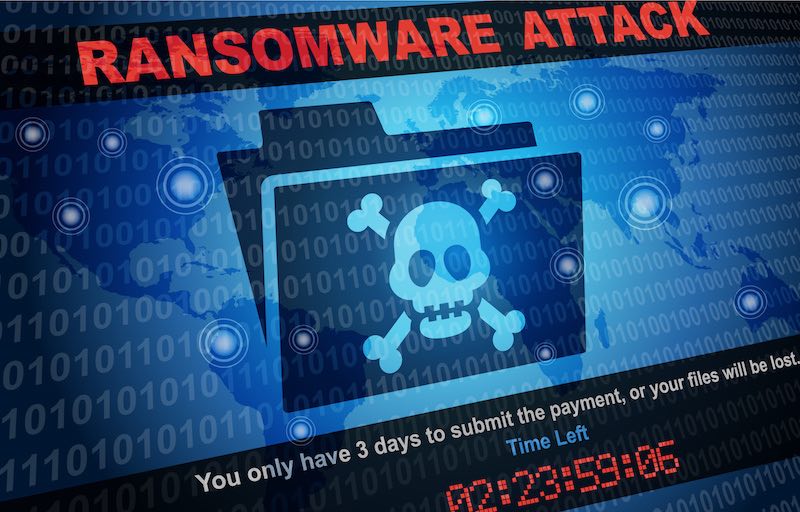Ransomware attacks are growing each day. There are many reasons for an internal ransomware attack. Cybercriminals have been creating various methods to lure their victim. One of the main methods they use for ransomware is phishing emails. With an intention of extortion, ransomware is a form of malware that targets your critical data and systems and is achieved using spear phishing emails. The cybercriminal demands a ransom payment after locking out the user from his own device and getting hold of user data. Cybercriminals would allegedly provide the victim with an opportunity to regain access to the device or data after obtaining payment. Ransomware attacks have been targeting end-users of businesses. Hence, making cybersecurity awareness and training are vital in an organization.

The hard truth is the majority of Internal Ransomware Attacks get through because of a user’s/ employee’s mistake. The users/employees do not really validate the sources of the emails they receive on a daily basis. Ransomware attack lures the target to click on a harmful link that results in injecting the malware inside the target’s systems. Ransomware attacks can potentially lead to a partial or permanent loss of sensitive data, money loss, disruption of business operations, and reputational damage to an organization.
As a type of cyber-attack, ransomware is growing rapidly because it is so powerful as a means of high financial gain. To make a ransomware attack successful, insiders have a financial incentive to partner with a cybercriminal. On the Darknet, business models have emerged that promise to divide the earnings of Ransomware attacks.
How can internal ransomware attacks be prevented?
We may wonder at times, how an organization claiming to have a good security strategy fall for a ransomware attack. The reason mainly is due to the employees. A careless act of a user or users could lead to the success of an internal ransomware attack. Phishing emails is one of the most popular ways to obtain access to people in an organization. Phishing emails seem legitimate but aim to deceive people into revealing data or downloading and opening a file linked to malware.
It is fair enough to mention that all it takes is, one distracted user/employee to use as bait to make an organization’s defense to crumble like a domino. In order to resume operations, post the internal ransomware attack, it is safe to enforce data backup. This would help your organization carry on business operations by initiating a business continuity program (BCP) strategy. Meanwhile, there must be actions taken to limit the spread of insider threats. Insider accomplice attack usually takes place when a company employee works alongside a cybercriminal and ends up bringing down the organization. This is known as Ransomware-as-a-service (RaaS). Internal ransomware attacks may have personal or random intentions orchestrated by an insider. The motive to assist such a ransomware attack operation may purely depend on the insider accomplice.
Building a strong security posture is not just a technology situation. To maintain a security posture consistently, organizations must include the risks that involve human errors. There are a few things to enforce to prevent an internal ransomware attack.
User/Employee Awareness Program –
Typically, companies employ training specialists to ensure that a clear and effective training program is provided to their employees. The cost varies, but the next ransomware attack could be avoided simply by making employees realize the risks of uploading attachments from unknown accounts on the business network.
Basically, to educate employees to not click or open unsolicited images or files that are sent from an unknown source via emails. The practice of continuous awareness training will prove to be effective for employees joining anew. Also, an organization’s security level and status can be verified by simulating an internal phishing email campaign to understand their employees’ security knowledge.
Implement Email Security –
As mentioned earlier, email is one of the key dissemination methods for ransomware. For this purpose, if you aim to avoid insider attacks, then email protection needs to become a priority. Precisely, to build automated processes supporting your internal policies, you must need data loss prevention or insider threat mitigation tools.
For instance, you will have the option not to allow any downloads of email attachments. Tracking communications is just another part of email protection. With the emergence of business strategies for Ransomware-as-a-Service, through partnering with a hacker, insiders who have no technical background could accomplish an exfiltration operation. You need to monitor whether any unusual communications are occurring.
Data Backups –
Backups must be taken at regular intervals. Data backups are crucial when it comes to eliminating potential harm caused by a breach. If you handle your own servers, and when your machine is backed up, then you have the capability to monitor the frequency. This is concise, but it’s not the end of ransomware security. For starters, you may have to focus on not tempting the insiders from triggering them. At the very least, backups will enable you to keep operating after the attack and should be included in the business continuity strategy or incident response plan.
Enforce Access Controls –
Ransomware attacks are mainly orchestrated to gain access to the user’s device and accounts. When an organization enforces a strict user access control policy and thereby, minimizes and terminates the user access for certain confidential information, then the cybercriminal would not have the upper hand in using an insider’s account to attack the organization. By implementing this strict user access control policy, you can monitor which directories and folders are allowed to read, write, and copy. It is also possible to use access controls to block all email attachments. In order to be successful, ransomware requires access. If one computer with minimal data is confiscated rather than the entire network, then it is safer for you.
Implement Software Restriction Policies –
Software Restriction Policies stop any programs from being executed or run from ransomware-known locations as it works effectively in temporary files, like the folder created when a document is “opened” as opposed to being downloaded. By setting up network policies, you shall very well prevent anything from running the files and folders. This would be effective.
Cyber Defence Strategy –
The best practice against internal Ransomware attacks is to prevent it from happening in the first place. Employing proper security measures and eliminating the loopholes that are likely to put the organization at risk. Firewall configuration to terminate access to known harmful IPs. Enforcing patch management systems for OS, software, etc. Running anti-malware programs to detect malware. The best any organization can do is be prepared when it comes to tackling any cyber threat or incidents. A ransomware malware attack can be catastrophic to an individual or a company, and recovery can be a complicated process that involves the services of a data recovery expert.
Ransomware attacks are growing each day. There are many reasons for an internal ransomware attack. Cybercriminals have been creating various methods to lure their victim. One of the main methods they use for ransomware is phishing emails.











